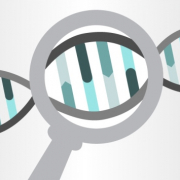The genetics of obesity
Latest genomic research explores genetic risk of excessive weight gain – are the causes of obesity environmental or is the answer in our DNA?
Obesity is a major public health issue for Western countries and, according to new research, the second highest cause of premature death in Europe and the US, after smoking.
The ‘obesogenic’ environment effect
We have a good understanding of the environmental and behavioural factors that lead to weight gain, yet the genetic determinants are more elusive. Single gene causes of obesity are extremely rare but there is an increasing body of evidence for the influence of polygenic factors associated with morbid obesity. A genetic ‘fat map’ published last year identified more than 60 genetic locations that influence body mass index.
What has become known as our ‘obesogenic’ environment – where energy-dense foods are plentiful and there is little need for physical activity – is thought to be driving a rapid increase in the prevalence of obesity. A new study is a step towards understanding the gene – environment – behaviour interactions that influence obesity and why environmental changes do not affect everyone equally.
Exploring genetic risk
Using data from the US Health and Retirement Study, scientists at the University of California San Francisco (UCSF) set out to investigate associations between BMI and polygenic risk of obesity and whether genetic risk was more strongly associated with BMI in more recent birth cohorts than in earlier birth cohorts. As genetic risk for adverse health outcomes may play a larger role for varying social groups, they were keen to examine such associations between black and white participants, noting that most of the research identifying genes linked to obesity has predominantly been conducted in whites.
Researchers calculated a genetic risk score for each of the 7,482 white and 1,306 black participants, who were born between 1900 and 1958. The risk score was based on whether participants had any of 29 genetic variants associated with obesity, and looked to see how this score compared with their BMI (based on self-reported height and weight).
Nurture’s impact on nature
Results showed that though the average BMI increased with age for all participants (up until the age of 65 – 69), the average risk score for individuals did not change over time. However, for those with a higher score, the increase in BMI was greater. The overall pattern was similar for both black and white participants, showing that for those who had spent a greater proportion of their lives in an obesogenic environment, i.e. participants born later, the association between genetic risk score and BMI was stronger.
The conclusion drawn was that genetic risk factors are of limited importance in driving the obesity epidemic, however, not discounting that an increasingly obesogenic environment may interact positively in individuals with a higher genetic risk. As interesting as the results may be, the study only used birth cohort as a proxy for the obesogenic environment and how any effect might be mediated is still unclear. There have been great changes in diet from the 1970s onwards but other factors such as poverty and poor nutrition in the Great Depression may have also played a significant role.
–









